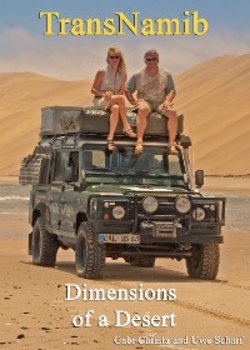Читать книгу TransNamib: Dimensions of a Desert - Gabi Christa - Страница 12
ОглавлениеLittle Lie-Big Lie – Statistics
Closing in on Steinkopf, the landscape gets boring. It is flat and uneventful, the road cutting dead straight through the barren area. Few feeder roads lead to mines and farms. Farmers share the country with mines, which fence off their areas, visitors not being welcome. There is little official information about the mines in this area, the Blue Mine being the most well-known locally. It was the first commercial copper mine in South Africa, and started working in 1852. South Africa is the biggest supplier of commodities in Africa. Apart from copper the most well-known mineral resources are platinum, gold, chromium, diamonds, iron ore and palladium. The latter being a precious metal, so to speak in the same family as platinum and silver. Palladium has the lowest melting point within the nickel group and doesn’t tarnish. The range of its applications is remarkable. The nib of the fountain pen, known to all of us from school, is made from this material. This metal is also used for dental applications, for the production of white gold and in applications of nanotechnology.
A few kilometres from the Namibian border, on a small elevation in the middle of the river bed, is an old cemetery. In the rainy season relentless floods of water pass it by, on the right and on the left. Death is thus kept at a safe distance from the village. The graves are unkempt, except for that belonging to the Liebenberg family which has recently been repainted. Nearly all the gravesites show modest mosaics made of the local light and dark stones. Personal items like marbles and folded written notes have been placed in jam jars. All is exposed to decay, many grave borders have already collapsed and their jars have been broken. The wind has long since taken their notes and blown the marbles about. The last funeral took place in 1950: the date is scratched into the stone, with an additional reference to psalm 19-20. Automatically, I ask myself aloud, how and where my life might end. Uwe doesn’t approve of such topics, today. He is right, aren’t we living here and now and not yesterday or the day after tomorrow? The new cemetery is set up some kilometres further north, protected by a high fence. The graves are adorned with gaudy plastic flowers and are safe from the floods of the river. Even this last resting place is outside of the village, far from the living.
Worldwide, day by day, many are killed by violent crime. South Africa is keeping records other states don’t. An official source reports that between 1994 and 2001 more than 1.100 whites were killed during 5.500 attacks on solitary farms. According to another statistic from that period, every second woman was more likely to get raped than to learn to read and write.
Even today, years on, high unemployment causes social imbalances. A report in the Financial Times, May 2010, makes me prick up my ears. It is about South Africa’s new capitalists, the Black Diamonds, as this small group of super-rich is called in the Cape. Within a short time they have managed to amass astonishing riches, while the fury of the impoverished masses is on the rise.
Once upon a time… this true story, frequently told in South Africa about Patrice Motsepe, still sounds like a fairy tale: Motsepe is walking through a glittering shopping mall in Cape Town and is recognised by some passers-by. Immediately, a knot of people forms. The assistants of a shop ask for his autograph; two teenagers hug him for a photograph; an old black lady takes his hand and makes it caress her furrowed face. Motsepe, mining tycoon and the richest black man in South Africa, is celebrated as a hero – someone who made it in the world of the whites.
This hero-worship has now ended, the mood has changed. The rich blacks are reproached for cronyism, exploitation and looting, in no way different from the whites during Apartheid. There is tremendous poverty in the country; the huge stadiums for the Soccer World Cup absorbed billions. Will the world be impressed and dare to look behind the curtain? Within the black population, the gap between rich and poor is getting wider and wider. The trigger for the undeniable crime is not greed for riches, but hunger. The daily struggle for survival is intertwined with violence, muggings and even murder. Jacob Zuma, the current president, tried to denounce it as a media-made myth. Ex-president Thabo Mbeki, however, strongly countered this and in public spoke of a distorted perception. In fact, statistically, the tide of violent crime is receding: The upward-moving middle class is helping to adjust part of the social imbalance. But, knowing that the number of murders has dipped to a certain percentage doesn’t really appease anyone, least of all myself. Why do the perimeter walls around the houses keep on growing higher and higher, why is there more and more security deployed in the gated areas, where people flock together?
